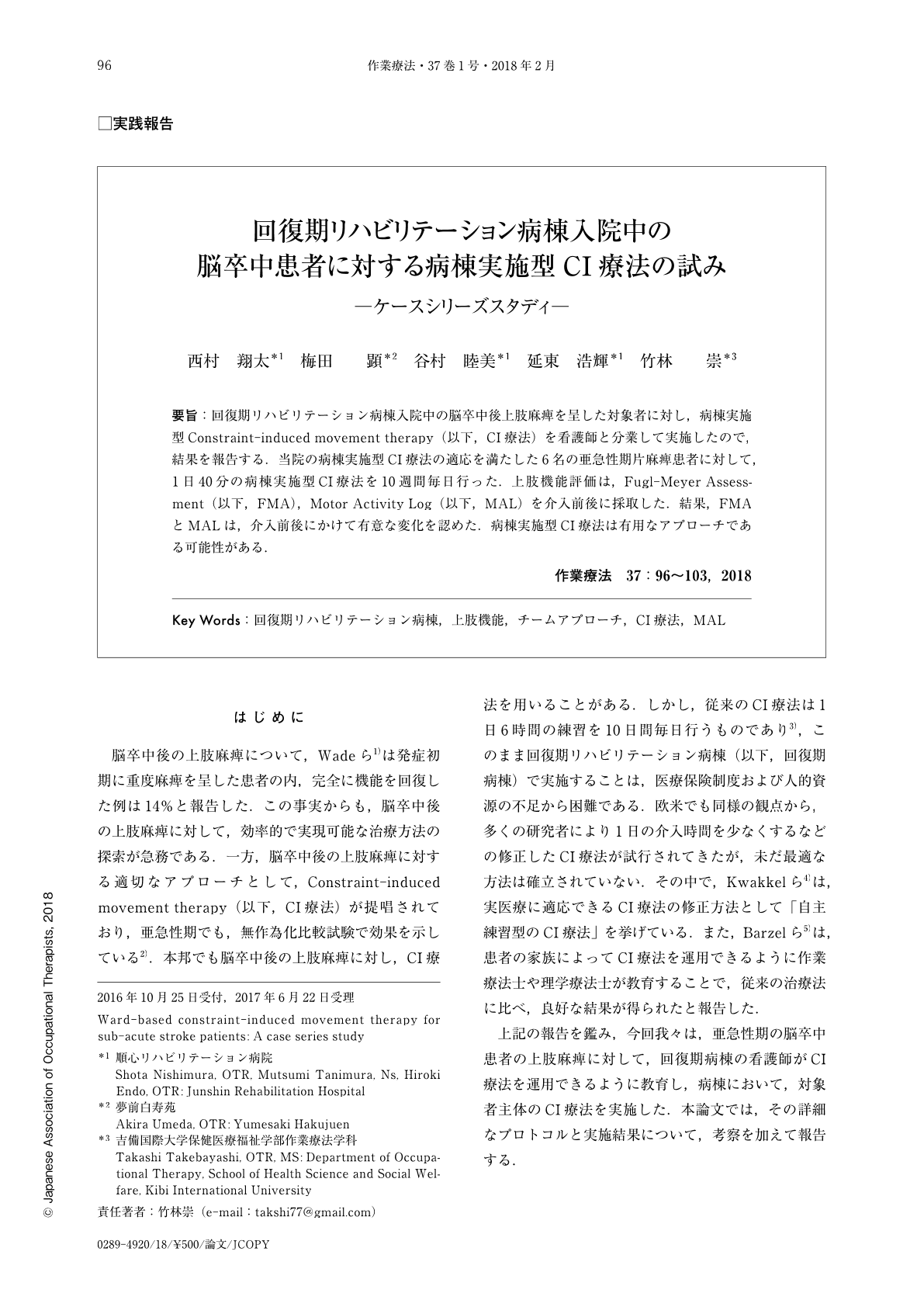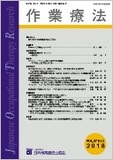Japanese
English
- 販売していません
- Abstract 文献概要
- 1ページ目 Look Inside
- 参考文献 Reference
- サイト内被引用 Cited by
要旨:回復期リハビリテーション病棟入院中の脳卒中後上肢麻痺を呈した対象者に対し,病棟実施型Constraint-induced movement therapy(以下,CI療法)を看護師と分業して実施したので,結果を報告する.当院の病棟実施型CI療法の適応を満たした6名の亜急性期片麻痺患者に対して,1日40分の病棟実施型CI療法を10週間毎日行った.上肢機能評価は,Fugl-Meyer Assessment(以下,FMA),Motor Activity Log(以下,MAL)を介入前後に採取した.結果,FMAとMALは,介入前後にかけて有意な変化を認めた.病棟実施型CI療法は有用なアプローチである可能性がある.
We report on a trial of ward-based constraint-induced movement therapy (CIMT) protocol with a division of labor between occupational therapists and nurses for stroke patients with hemiparetic arms in Kaifukuki Rehabilitation Ward. Six subacute stroke patients with hemiparetic arms received the daily ward-based 40-minute CIMT training for 10 consecutive weeks. We assessed the arm function in pre- and post-intervention using both the Fugl-Meyer Assessment (FMA) and Motor Activity Log (MAL). Both the FMA and MAL scales showed significant improvement in pre- and post-intervention. The ward-based CIMT might be an effective approach for paretic arms in subacute stroke patients.

Copyright © 2018, Japanese Association of Occupational Therapists. All rights reserved.


